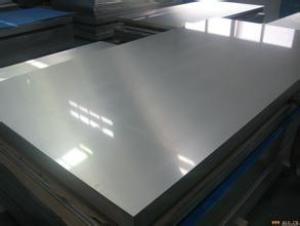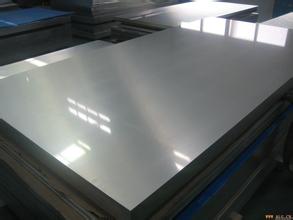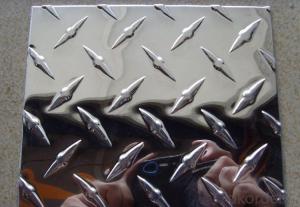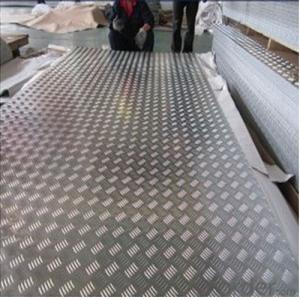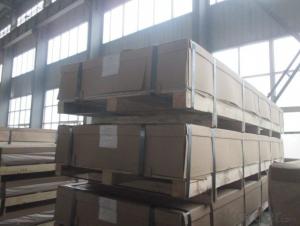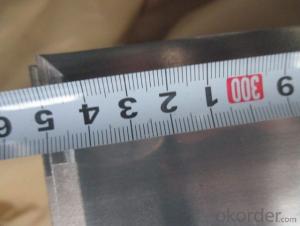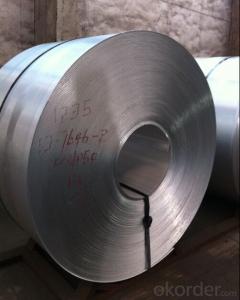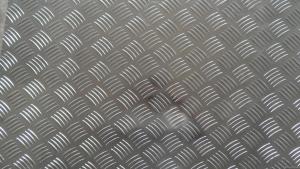Aluminum Diamond Plate Sheets - Competitive Price with High Quality
- Loading Port:
- China main port
- Payment Terms:
- TT or LC
- Min Order Qty:
- 8 m.t.
- Supply Capability:
- 2000 m.t./month
OKorder Service Pledge
OKorder Financial Service
You Might Also Like
Structure of Aluminium Sheet Description:
Aluminium sheet are of a wide range of colors, which gives wonderful appearance no matter in residential and commercial constructions of great exhibition centers.
The Aluminium sheet have been widely used in the fields of construction and decoration( garage doors, ceiling etc.), electronic appliances, lighting decoration, air-condition air pipes, sandwich panels and drainages etc.
Main Features of Aluminium Sheet:
1.bright surface
2.easy process
3.non-stick
4.quick delivery time
Images of Aluminium Sheet:
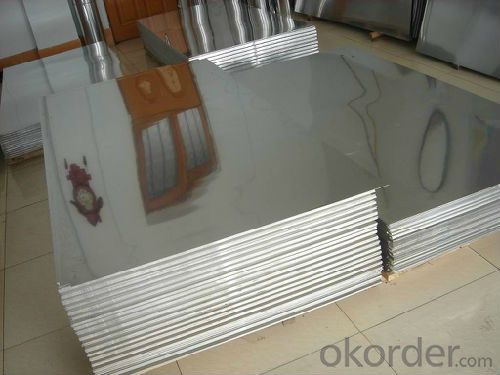
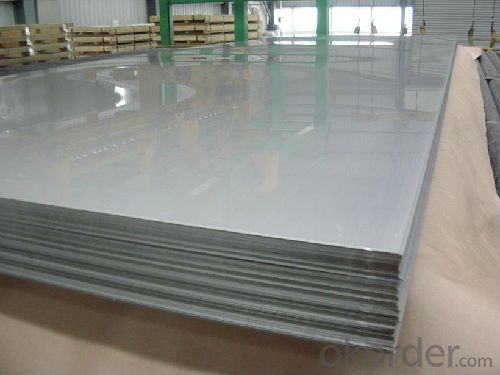

Aluminium Sheet Specification:
| Description | Aluminum circles |
| End Use | Cookware,lamp cover,lighting,Pot, Pan,Lid,untensils,Road Sign Board |
| Alloy | A1050,A1100,A1070,A1060,A3003,A5052 |
| Temper | O(soft),H22,H14,H16,H18 |
| Thickness | 0.2mm to 6.0mm |
| Diameter | 100mm to 1200mm |
| Packing | Export seaworthy packing |
| Surface | Plain,Bright,No Marks |
| Grade | DC and CC |
| Tensile Strength | 60-135mpa |
| Elongation | Min1% |
FAQ of Aluminium Sheet:
What's your processing technique?
Ingot/Master Alloys --- Melting Furnace – Holding Furnace --- D.C. Caster --- Slab ---- Scalper --- Hot Rolling Mill – Cold Rolling Mill – Punching – Annealing Furnace -- Final Inspection – Packing --- Delivery.
According to the order of the thermal conductivity of the metal, corrosion resistance and production cost, refrigerator interior sheet metal is chosen instead of aluminum other metals, to ensure its good thermal conductivity of the premise, as far as possible to reduce costs and the choice of corrosion-resistant material processing, aluminum is the best choice.
Secondly, in order to increase the length of the liner internal exchange area and the outside air heat, refrigerator interior selected embossing plate instead of the flat plate. In the absence of refrigerator interior space cause pressure to increase the use of embossed aluminum air tank wall contact area for a more efficient uniform heat exchange.
Speaking on the cooling rate: according to the laws of physics, thermal conductivity of aluminum is 237W / mK, the thermal conductivity of iron is 80W / mK, the thermal conductivity of the larger the number, the better the thermal conductivity, under the same conditions cooling faster the cooling effect is better. Using embossed aluminum evaporator, cooling rate is 3 times the wire tube evaporator. You can do a little to test in the refrigerator freezer compartment through an aluminum plate on a drop of water drops, 5 seconds into the ice, cooling is very fast!
- Q: What is the difference between aluminum sheet and aluminum curtain wall? The cost is high!
- Composite aluminum plate is also called aluminum composite plate,The aluminum composite plate and aluminum sheet belong to curtain wall decoration materialThe difference between the two liesThe aluminum sheet is also called the pure aluminum sheet, and the single aluminum plate is coated with decorative paint on the aluminum plate surface,Aluminum composite plate is two layers of relatively thin and some also coated with aluminum decorative paint, and a middle plastic or honeycomb core, corrugated core, fireproof core plate composite. Contains aluminium composite panel, aluminum honeycomb board, aluminum composite corrugated board, aluminum composite wood plate, aluminum plate with the stone composite.According to the raw material composition, the aluminum single board price will be higher
- Q: Can the aluminum sheets be used for manufacturing power transmission lines?
- Yes, aluminum sheets can be used for manufacturing power transmission lines. Aluminum has several properties that make it suitable for this purpose. First, aluminum is a lightweight material, which makes it easier to handle and transport compared to other metals like copper. This can help reduce installation costs and make the power transmission lines more efficient. Second, aluminum has good electrical conductivity, although it is not as conductive as copper. However, due to its lighter weight, aluminum can still achieve similar electrical performance as copper while using less material. This can result in cost savings and lower energy losses in the transmission lines. Furthermore, aluminum has excellent corrosion resistance, which is crucial for power transmission lines that are often exposed to various weather conditions and environmental factors. Aluminum can withstand harsh conditions and maintain its structural integrity over time, ensuring the reliability and longevity of the power transmission infrastructure. In conclusion, aluminum sheets can indeed be used for manufacturing power transmission lines due to their lightweight nature, good electrical conductivity, and excellent corrosion resistance.
- Q: Are the aluminum sheets suitable for manufacturing electrical enclosures?
- Indeed, aluminum sheets prove to be a suitable material for the production of electrical enclosures. Within the manufacturing industry, aluminum is widely utilized due to its versatility and numerous advantages. To begin with, aluminum possesses a unique combination of lightweight properties and strength, making it an ideal choice for constructing enclosures that require durability without the burden of excessive weight. Its strength-to-weight ratio surpasses that of many other metals, allowing for the creation of sturdy enclosures without unnecessary bulkiness. Moreover, aluminum exhibits exceptional resistance to corrosion, a crucial attribute for electrical enclosures that may encounter various environmental conditions, such as moisture, humidity, or corrosive elements. The natural oxide layer present on aluminum acts as a protective barrier, ensuring the enclosures' longevity and reliability. Additionally, aluminum possesses excellent electrical conductivity, a vital characteristic for electrical enclosures. This property facilitates efficient dissipation of heat generated by electrical components, effectively preventing overheating and potential damage to the enclosed devices. Furthermore, aluminum is highly machinable and can be easily molded into different shapes and sizes. This inherent flexibility enables manufacturers to customize the enclosures according to specific requirements, ensuring a perfect fit for the intended electrical components. Finally, when considering cost-effectiveness, aluminum proves to be a more economical choice compared to other metals such as stainless steel or copper. It strikes a balance between affordability and performance, making it an attractive option for the manufacturing of electrical enclosures. In conclusion, the lightweight nature, strength, corrosion resistance, electrical conductivity, machinability, and cost-effectiveness of aluminum sheets make them a highly suitable material for the production of electrical enclosures.
- Q: Would you please tell me what putty to use on the aluminium board, what kind of putty, and the painting process?
- Applied atomic ash.Consider adding an interface agent, that is, applying an interfacial agent on the aluminum plate, and then applying a topcoat on the interface agent after drying.You can also consider adding primer or putty, and then spray paint.In summary, adhesion of the topcoat is reinforced with an agent.
- Q: What are the common uses of aluminum sheets?
- Aluminum sheets possess excellent properties, rendering them highly versatile and extensively utilized across various industries. Their applications encompass: 1. Construction: In the construction industry, aluminum sheets find common usage for roofing, siding, and insulation purposes. Their lightweight nature, durability, and resistance to corrosion make them ideal for shielding against the elements. 2. Transportation: The automotive and aerospace industries heavily rely on aluminum sheets. These sheets contribute to the manufacturing of car bodies, truck trailers, and aircraft parts owing to their impressive strength-to-weight ratio. Consequently, the utilization of aluminum sheets aids in enhancing fuel efficiency and reducing overall vehicle weight. 3. Packaging: Aluminum sheets serve as a popular choice for packaging purposes, specifically within the food and beverage industry. Cans, foils, and containers are frequently crafted from aluminum sheets, as they effectively safeguard packaged products by acting as barriers against moisture, light, and oxygen. 4. Electrical and Electronics: The electrical and electronics industry benefits from the application of aluminum sheets due to their exceptional conductivity. Their utilization extends to the manufacturing of electrical enclosures, heat sinks, and wiring, as they efficiently dissipate heat and protect delicate electronic components. 5. Marine Industry: Aluminum sheets hold significant value within the marine industry due to their resistance to corrosion. They are employed in the construction of boat hulls, ship fittings, and other marine equipment. The ability of aluminum sheets to withstand harsh marine environments, alongside their lightweight properties, renders them an appealing choice. 6. Decorative Applications: Architectural applications often feature aluminum sheets for their aesthetic appeal. These sheets can be effortlessly shaped, formed, and colored to create diverse decorative elements like wall cladding, ceilings, and decorative panels. In conclusion, aluminum sheets serve as a fundamental material across numerous industries, including construction, transportation, packaging, electrical and electronics, marine, and decorative applications. Their versatility and significance are evident in their widespread utilization throughout various sectors.
- Q: What are the dimensions of standard aluminum sheets?
- The dimensions of standard aluminum sheets vary depending on the intended application. However, common sizes for standard aluminum sheets range from 0.02 to 0.249 inches in thickness, 36 to 72 inches in width, and 96 to 144 inches in length.
- Q: Can aluminum sheet be used for decorative purposes?
- Indeed, aluminum sheet serves as a suitable option for decorative uses. With its adaptability, aluminum can be effortlessly molded, trimmed, and fashioned into an assortment of patterns, rendering it an excellent choice for embellishing ventures. Whether utilized to fashion decorative paneling, sculptures, signage, furnishings, or numerous other ornamental components, aluminum proves itself indispensable. Furthermore, aluminum can be anodized or painted in an extensive array of hues, enabling additional personalization and accentuating its visual allure. Additionally, its lightweight composition and corrosion resistance render it a pragmatic selection for both indoor and outdoor decorative endeavors.
- Q: Can the aluminum sheets be painted or coated with a different color?
- Indeed, it is possible to paint or coat aluminum sheets with a different color. Aluminum, being a flexible material, lends itself well to the application of paint or coating in order to achieve the desired color or finish. This can be accomplished using a range of techniques, including powder coating, anodizing, or the use of liquid paint. These methods serve to both protect the aluminum sheet's surface and alter its color or appearance. The selection of the specific paint or coating will hinge upon the particular requirements and desired outcome. On the whole, the practice of painting or coating aluminum sheets is commonplace, granting opportunities for customization and aesthetic enhancement.
- Q: Are 101 aluminum sheets suitable for automotive body panels?
- Yes, 101 aluminum sheets are suitable for automotive body panels. 101 aluminum is a high-strength alloy that offers good formability and corrosion resistance, making it an excellent choice for automotive applications. It is lightweight, which helps improve fuel efficiency and overall vehicle performance. Additionally, 101 aluminum has good dent resistance, ensuring that the body panels can withstand impacts and maintain their structural integrity. Overall, using 101 aluminum sheets for automotive body panels is a practical and effective choice.
- Q: Do you use aluminum alloy boards or aluminum plates for outdoor billboards?
- Aluminum alloy low density, but relatively high strength, close to or higher quality steel, plastic good, can be processed into various profiles, with excellent conductivity, thermal conductivity and corrosion resistance, widely used in industry, the use of only steelIn general, outdoor billboards are made of aluminium alloy sheets
Send your message to us
Aluminum Diamond Plate Sheets - Competitive Price with High Quality
- Loading Port:
- China main port
- Payment Terms:
- TT or LC
- Min Order Qty:
- 8 m.t.
- Supply Capability:
- 2000 m.t./month
OKorder Service Pledge
OKorder Financial Service
Similar products
Hot products
Hot Searches
Related keywords
